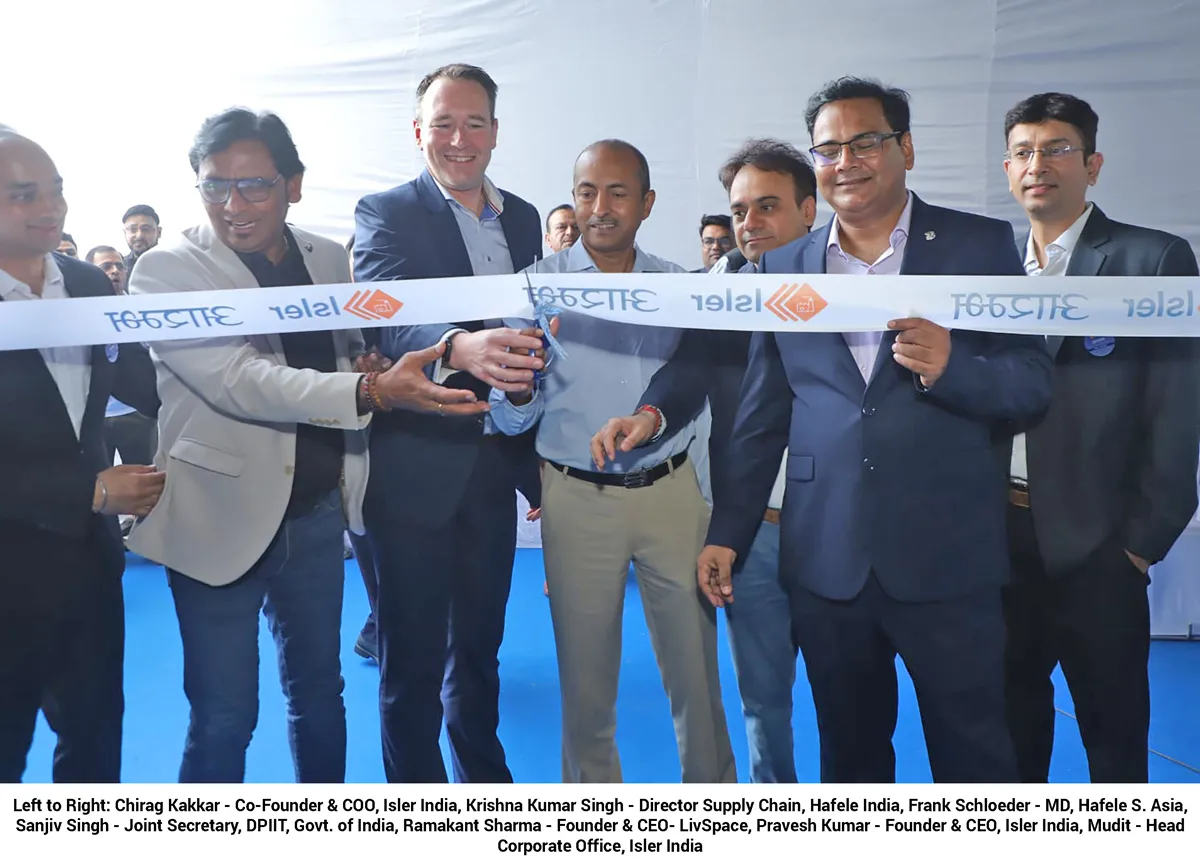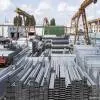CW explores current challenges in financial closure and land acquisition in the roads segment that could act as major deterrents in achieving the ambitious target of 40 km per day. In a year that witnessed the country’s leading infrastructure company, IL&FS, default payments to lenders, triggering panic in the market, the roads sector continued to make the headlines.With a 10,000 km target set aside for the construction of National Highways in FY2018-19, this sector spurs maximum construction opportunities for contracting companies. And reports indicate that 6,715 km has been achieved as on December 31, 2018. According to Asheesh Sharma, Member-Finance, National Highways Authority of India (NHAI), “This year, the amount of construction we do will be the highest.” However, NHAI’s most popular HAM projects witnessed a bit of a financial jam in September 2018. Tying up the necessary funding for HAM projects took slower than the stipulated 150 days; reports then indicated that only 21 of the 64 awarded HAM projects in FY2018 achieved financial closure (FC). Players with poorer balance sheets, lower credit ratings and shorter track records faced issues, and the problem of land acquisition only added to the delays. (See updated status on www.ConstructionWorld.in/HAM) “This year, our focus has been on the FC of HAM projects,” says Sharma. “Plus, we now ensure we award projects only when 80 per cent of the land is in our possession. So even if the award date gets shifted, at least the land is there. That has been a major change this year.”Industry rumours reveal that this challenge led to NHAI awarding projects primarily on the EPC route. But even in EPC projects, developers are finding it difficult to procure performance and mobilisation bank guarantees. However, Sharma clarifies, “We have been awarding projects on the EPC mode only in the case of greenfield projects. As a policy, we have decided to award about 60 per cent of projects under HAM.”Despite all the chatter, the government is sticking to its avowed mission of laying 40 km per day. Can 40 km a day be a reality? It is believed that if NHAI is able to quickly resolve regulatory and land acquisition challenges, it can comfortably meet its targets.EPC projects require 100 per cent funding from NHAI, while HAM needs 40 per cent upfront and the balance amount with interest over a 15-year period. In the view of Vijay Agrawal, Executive Director, Equirus Capital, “NHAI has ample bandwidth to raise funds and accomplish its awarding and construction target as its leverage ratio is at a comfortable level.”“We raise bonds,” points out Sharma. “We have raised 54EC bonds. We get bonds through the National Small Saving Fund (NSSF); LIC is one. If required, we go in for term loans from banks. For example, we took a term loan commitment from SBI of Rs 250 billion this year. Also, NHAI’s borrowing this year was around Rs 600 billion.” In fact, NHAI has signed a MoU with several banks and LIC to raise money to fund EPC projects for an amount of Rs 330 billion. It plans to raise funds of Rs 620 billion from the issue of bonds. The authority raised Rs 96.80 billion in the first tranche of its toll-operate-transfer (TOT) auction model and is expected to raise Rs 53.60 billion in the second tranche. It plans to monetise 75 already operational highways through the TOT model. The majority of the ambitious Bharatmala programme is expected to be undertaken through NHAI. “Total budgetary allocations (including PBFF, CRF and GBS) to fund the new highway development programme are estimated at Rs 3,430.45 billion over FY2019-22, averaging around Rs 860 billion per annum,” says Rajeshwar Burla, Assistant Vice President & Associate Head-Corporate Ratings, ICRA. “In addition, total market borrowings for Bharatmala are estimated at Rs 2,092.79 billion till FY2022, averaging around Rs 530 billion per annum.”While NHAI’s borrowing programme is on track, the budgetary allocation in the past two budgets was lower than the required (Rs 720.10 billion for FY2020; around 21 per cent lower than required), thereby necessitating dependence on other funding avenues. “Timely monetisation of mature road assets is critical to fetch funding to support the execution targets set for the Bharatmala programme, failing which, the shortfall has to be met through additional borrowings, thereby further increasing the debt at NHAI,” says Burla.For his part, Vishal Kotecha, Associate Director, India Ratings and Research (Fitch Group), sees the 40 km target a distance away. “At present, the ministry is in line to clock 30 km a day,” he says. “With this, they have done around 6,700 km by December as against 5,600 km last year.”Funding challenge in HAM“Given the government’s conscious shift in strategy from traditional BOT model towards EPC and HAM, it is evident that NHAI would need to significantly improve the visibility of raising funds on their balance sheet, failing which there may be speculations about their limited financial bandwidth,” says Sandeep Upadhyay, Managing Director-Infrastructure Advisory, Centrum Capital. “One of the primary challenges today is funding these projects for the next 15 years; so lenders and other stakeholders have to take a call on NHAIs leveraging capabilities over the next 15-20 years. The second impediment is the reluctance of banks to fund HAM projects, given the greenfield risks associated with it. The third risk is associated with the ability of promoters to bring-in their contribution of 12-15 per cent of the total capex as equity in HAM projects.” Apart from the these challenges being faced for long term financing, the EPC companies are facing a huge push back from the banks on the issuance of non-fund based limits against new orders on account of huge NPA fallout with EPC firms due to their bank guarantees (BG) being invoked on account of non-performance.Of the total 108 HAM projects awarded to date, 60-odd projects have been awarded in FY2018. “Of these, as on February 7, 2019, around 45 per cent projects are yet to complete FC including 20 per cent wherein documents are yet to be submitted,” confirms Kotecha. A delay in FC is evident, for which, Kotecha points to “the lack of participation of PSU banks.” HAM was introduced following the failure of the BOT toll model owing to aggressive initial traffic estimates. As Agrawal says, “HAM was introduced to alleviate toll estimation pressures, get wider market participation in the PPP model and reduce funding pressures on the authority.” Nonetheless, he avers that HAM is also singing a similar tune as the BOT toll model. Awards in HAM assets have significantly dried up, the main reasons being delay in promised land acquisition by NHAI and large lead times in obtaining other regulatory clearances.“Average land acquisition costs have spiked from Rs 9.2 million per hectare in FY2014 to Rs 23.8 million per hectare in FY2018,” says Agrawal. This has created a lot of funding apprehensions where banks are insisting on releasing funds only after the majority of the land is available. He also points out that developers have submitted aggressive bids for HAM projects and have won many more projects than they can finance. Public-sector banks, clearly, are wary of funding new road projects. Lenders are asking developers to show upfront project equity before loan sanction or disbursement. This has delayed FC of HAM projects leading to delays. And, in view of delayed FC, NHAI has slowed down HAM bidding and is focussing on EPC bids. (See table on ‘Shift from Toll to HAM and back to EPC’ on page 52)Devayan Dey, Director-Capital Projects and Infrastructure, PWC, views the reasons for financing challenges as fairly clichéd in terms of poor liquidity, poor capacity or credit worthiness of players, hitches around termination clauses, etc. What’s more important, in his opinion, is to understand what led to such a situation. “These reasons are just intermediary outcomes and not the cause,” he explains. “The root cause can be traced back to procurement norms, especially the qualification criteria not having been reformed for over a decade and being easy to bypass. While land acquisition and clearance issues do persist, the issues are amplified when aspiration versus capacity mismatch remains unchecked by procurement filters. Lack of capacity quickly transforms into delivery issues and lenders started losing confidence.” Lenders are not averse to lending unless the balance sheet and capacity of the borrower do not provide enough confidence. However, it is definitely taking more time.Looking at projects awarded in the past two years, Burla says, “HAM and EPC together accounted for over 95 per cent of total awards with EPC accounting for around 50 per cent, followed by HAM at around 45 per cent.” He adds that a majority of the Bharatmala programme is proposed to be executed through the EPC route. So, the current award mix is better in terms of private-sector participation compared to the proposed funding plan. “As such, from NHAI’s side, currently there are no funding challenges for HAM projects,” Burla confirms. “But as far as funding challenges for developers (concessionaires for BOT-HAM projects) are concerned, he says, “Overall, there has been improvement in acceptance levels for national highway-HAM projects from lenders. The time taken to achieve FC has reduced considerably – by more than 50 per cent from 430 days in FY2016 to 194 days in FY2018. However, FC-related challenges resurfaced given that many PSU banks are under prompt corrective action.” He adds that, increasingly, for new developers taking high exposure to HAM projects, achieving closure could be even more challenging in the current situation. Given the low equity requirement for HAM, lenders are concerned about the developer’s commitment till the end of the concession period, especially given that some developers have limited experience in the development space – many Tier-II developers have won HAM projects.The EPC trendGoing forward, EPC will remain the preferred mode of bidding. According to Agrawal, “In the past, lenders have given BGs, which have been devolved owing to workmanship issues and dispute with authorities. Hence, now bankers are cautious in issuing BGs.” Around nine public sector banks (PSBs) are in Prompt Corrective Action (PCA). Hence, there is delay in receiving BGs or working capital because of a liquidity-starved banking system growing increasingly discomforted by recent market events. Banks are thus looking for healthier credits. Nonetheless, Agrawal believes many financial instruments and credit enhancement comfort structures are available in the market today for players to survive this temporary glitch. “Further, EPC is the short term way to go forward as fresh equity tie-ups take some time and banks are not willing to lend to BOT or HAM projects,” he reasons. Hence, the mindset has temporarily changed in favour of the EPC model.Non-fund based (NFB) exposure to the construction sector has grown at a CAGR of 11.5 per cent over the past four years and stands at over Rs 1 trillion at present, compared to Rs 900 billion of fund-based exposure. Over two-thirds of the NFB exposure is from public-sector banks, of which more than 20 per cent is from the 11 banks under PCA at present. Including the infrastructure sector, the total NFB exposure of banks is close to Rs 4 trillion. Further, the change in national highway EPC contracts since 2014 involving a longer defects liability period (increased from two years to four years) will also elongate the BG release cycle. Sharing ICRA estimates, Burla predicts the construction sector will require incremental BGs of Rs 150-200 billion per annum over the next three to four years. This will require additional collateral of Rs 30-60 billion. “Given that many mid-sized players have been able to secure multiple projects, getting the BG limits enhanced and arranging adequate collateral could become challenging and constrain them from taking up additional projects,” he reasons. “At the macro level, limited availability of BGs could also constrain pace of infrastructure development.”Typical funding issuesGood traffic growth led to a lot of players bidding heavily for projects between FY2010 to FY2012. But awarded projects faced delays in achieving FC as many players had bid aggressively by quoting a huge premium amount. Land acquisition hurdles and revenue leakages remained rampant.“All EPC companies are facing challenges related to the issue of BGs, FC of projects, working capital limits, etc,” points out Agrawal. “Now, lenders have started considering non-fund limits as part of fund-based limits while appraising working capital requirements. Typically for an EPC company, fund based limits are 25 per cent of non-fund based limits.” As lenders are considering fund-based and non-fund based in entirety, many EPC companies are facing a funding crunch. Banks are now asking for release of earlier BGs where time limits have expired and not released by the authority fearing devolvement. Pointing to the issue of capital recycling, Dey says, “While there are plenty of assets up for sale in the sector, there are perception issues around many of them.” For HAM, only a few players with appropriate capability, like Cube Highways, are interested. In toll projects, too, there is lack of agreement on the quality of assets and buyer-seller convergence is slow. (See box on Road Assets Sold in 2018-19)Meanwhile, Agrawal emphasises upon the basic principle of finance: Equity should be funded by way of equity and not by debt. A few companies like KNR have avoided aggressive biddings and capital commitment. As they have bagged projects at better margins and within their execution capabilities, they need not worry about FC or execution. KNR has also tied up with institutional investors for upfront selling of its HAM projects after completion, thus creating a path for freeing up capital for future biddings. “We believe financial discipline can overcome any funding issues,” says Agrawal. Debt tie-up is critical in HAM and the bigger issue remains acquiring land. “A few years ago, NHAI used to follow a mechanism, wherein a developer with more than three projects that had not received FC could not bid for a new project,” recalls Kotecha. “However, this has been relaxed as project award activity was skewed in Q4 FY2018, resulting in developers securing a large number of projects requiring significant funding arrangement.”Recommendations: New funding mechanismsIn the past, banks have funded projects based on NHAI backing. However, it has been known that the authority has not given due importance to lenders. As Agrawal says, “Even in many stuck projects, NHAI has issued penalty notices and tried to recover penalty at the cost of lenders.” Hence, public-sector banks are averse to lending to the roads sector, which is visible in the delayed FC of HAM projects.” As alternatives, he suggests:Banks can tie up with the help of partial NHAI credit guarantee after bidding – like PCG structures seen in the past by agencies (IIFCL) to boost credit grade and offer the bank comfort. Making appropriate changes in InvIT laws to create an environment where retail investors and long-term investors like pension funds are confident to invest in InvIT. NHAI can increase TOT bids and raise more funds to attract long-term funds and increase FDI flows.”For his part, Burla expects the government to make an announcement on equity raising plans and/or launch InvIT to fund the ambitious Bharatmala programme. “The financial burden on the government will be lowest in the case of the BOT toll model followed by BOT-HAM and EPC models,” he adds. “To support the huge investments required for Bharatmala, private-sector participation remains a key. Hence, a good mix of BOT toll and BOT-HAM projects is desirable. The provision to renegotiate contracts is an important suggestion made by the Kelkar Committee to balance risk-sharing among stakeholders in the PPP model.” Thus, setting up a PPP Project Review Committee and Infrastructure PPP Adjudication Tribunal to renegotiate concessions if there is evidence of distress in projects (not because of aggressive assumptions or irrational bids), which is likely to result in default (if the direct cost implications on account of renegotiation are less than the financial outcome of doing nothing), would be a step in that direction. Given the funding situation at the NHAI level, EPC cannot be a long-lasting solution should targets remain as ambitious, in Dey’s view. PPPs or private investments will have to be brought back eventually, he says, sharing: “The question is can we bring back PPPs in its current form? Yes we can. The current landscape of PPP project structures caters only to three stakeholders: The government, developer or construction companies, and lenders. However, the market now has a fourth stakeholder: Secondary market investors. Without taking onboard their interests, capital recycling will eventually hit a roadblock. So given the (a) interest of secondary market investors in upside of toll projects; (b) reduced bandwidth of NHAI for annuities or complete EPC; and (c) protection of debt sought by lenders, BOT toll projects with minimum revenue guarantee structure can be looked at.In item rate and EPC projects per se, the funding scene can be improved by improving fund utilisation itself. In a recent study, we found that 90 per cent of projects with mobilisation delay never recover to be able to deliver on time or within cost. In such cases, escrow mechanisms similar to PPPs can be examined where use of funds can be monitored and regulated. In terms of pure funding sources, it may be the appropriate time to implement highway congestion pricing schemes to incentivise distribution of traffic across DFC, IWT, highways, etc. For example, additional toll on commercial vehicles in routes where rail and waterway alternatives are available may help distribute traffic. Diverted traffic enhances viability of other modes as well as delays the need for capacity augmentation of highways until the network balances out.” Points to ponder, surely.Current size and value of projects awarded by NHAI“There have been pressures given the challenges of fiscal management where there is a dependence on the government for funding through the Budget,” says Madan Sabnavis, Chief Economist, CARE Ratings. He adds that the latest budget has an allocation of about Rs 370 billion, which is supported by extra budgetary resources. The MoRTH, along with its implementing bodies NHAI and NHIDCL, has awarded over 51,000 km of national highways over the past four years. The award rate has climbed from 21.9 km per day to around 46.7 km per day. Construction rate, too, has increased from 12.4 km per day to 26.9 km per day. The award rate has grown 113 per cent and the construction rate has increased by 117 per cent. These two parameters taken in isolation indicate a sizeable improvement in the development of the road network. Additionally, budgetary allocation has doubled from Rs 350 billion in FY2015 to Rs 710 billion in FY2019, a 100-per-cent increase over the four-year period.Are Roads Jammed?CW connects with leading contracting companies to gauge their experience in achieving financial closure for road projects.“For 100 per cent of our fund-based projects including HAM, our company has secured financial closure (FC) within the respective stipulated timeframes,” confirms Yogesh Kumar Jain, Managing Director, PNC Infratech.“With regard to our four NHAI road HAM projects,” says K Jalandhar Reddy, Executive Director & CFO, KNR Constructions, “FCs have been achieved and approved by NHAI.”“In HAM, we have a total of 12 projects and have received FC for all of them,” confirms Devendra Jain, CEO & Executive Director, Dilip Buildcon. The company has a total of 24 road assets including HAM, BOT, etc. Commenting on the company’s recently bagged five HAM projects, Paresh Mehta, CFO, Ashoka Buildcon, says, “These contracts were bagged in March-end last year and we achieved FC well in time for all the projects.” The company has received the appointed date for one project with the appointed date of the remaining four expected shortly. Has HAM been a challenge?According to Devendra Jain, there was a challenge from March to September-October 2018 in achieving FC. Several banks had huge NPAs and, in all, the number of banks available for funding was less. “We, too, had 12 projects that required FC,” he reveals. “But as our credibility with banks was good, we were able to secure funds successfully.”“While there could have been delays at certain stages mainly on account of employer compliances, we have been generally completing projects in time or early. On the performance side, lenders have been quite comfortable,” says Mehta. “For FC, technical performance and equity ability are important, where we have sufficient ability, both in execution track record and equity. Our balance sheet is quite strong, so our ability to commit equity and resources are substantially strong and our lenders have total comfort on the same.” For the five HAM projects, the company had an equity of Rs 4.80 billion to be deployed. Of this, 40 per cent has already been deployed and Mehta is certain the balance will gradually happen over the period of execution.Commenting on the challenges in HAM projects, Mehta adds, “The first challenge is on financial closure of projects. Many public-sector banks are not underwriting these projects. Second, a limited number of bankers are keen to participate in the syndication of debt.” When underwriters go to the market for syndication, a few public-sector banks such as Bank of India, Union Bank, PNB and Bank of Baroda have participated and sanctioned loans. But down-selling of underwritten projects is not a fast process and takes its own time. So, public sector banks are yet to come back on the funding programme for HAM projects. Even the State Bank of India has been cautious in funding these projects. Other institutions like IIFCL are keen on funding projects.The EPC gameAs PNC Infratech has adequate non-fund-based limits, it does not face any challenge in procuring bank guarantees towards bid security, performance security and mobilisation advance, says Yogesh Kumar Jain. KNR Constructions, too, has not faced any challenges – Reddy confirms that the company’s utilisation level is 70 per cent of its limit sanctioned.Mehta explains that there are bankers who are vary of funding EPC and have become selective. “It is expected that over a couple of quarters, bankers will be more amenable to fund infrastructure projects. Companies invest in machinery and manpower and due to uncertainty of pipeline of orders and on exhaustion of order book, it becomes challenging for the companies, leading to aggressive bidding in certain cases and stress on the working capital.” As a company, Ashoka Buildcon has had a robust run rate of nine months execution with a 46-per-cent jump compared to last year.Funding routesPursuant to the RBI’s Prompt Corrective Action (PCA) Framework, the majority of public-sector banks are not in a position to fund infrastructure projects. According to Yogesh Kumar Jain, “A limited number of PSU banks and some private-sector banks are responsive in lending for infrastructure projects”, which restricts funding avenues to the majority of infrastructure companies. He hopes more PSU banks are emancipated from the RBI’s PCA framework soon for an unconstrained funding mechanism for infrastructure projects. For his part, Reddy says, “Of the four NHAI HAM projects, the company has signed share purchase agreements for three projects with Cube Highways, a foreign investor, to invest 49 per cent of equity till Commercial Operation Date (COD) and purchase the balance 51 per cent between COD and two years from COD.” The objective is that the company will exit the three HAM projects on COD plus two years.Dilip Buildcon is looking at long-term funding, which may include non-convertible debentures (NCDs) and mutual funds.“On the debt and equity side, private equity players are interested in NHAI projects as these are AAA-rated and yield generating assets,” observes Mehta. “They are keen to tie-up for equity for projects during the construction phase itself through a structured transaction, which could initially be in the form of debt, and on completion of construction converted to equity; and they can acquire the project.” In his view, where the concessionaire has the opportunity to churn his asset base and get into new projects, it becomes a good alternative to concessionaires struggling for equity, as the completed project investors are looking for assets that generate yields.The government, too, must play its part to push bankers by offering a different status for funding such projects. Norms for bidding of HAM and EPC projects need to be modified to ensure bidding is more healthy and not aggressive.Funding Roads: The India ChallengeIndia’s road network, one of the largest in the world, has increased from about 3.37 million km in 2001 to over 5.6 million km in 2017. The government continues to focus on the major road development programmes launched earlier and the targets for road construction are being increased progressively. Improving connectivity, maintenance and safety are key priorities. In October 2017, the government launched the Bharatmala Pariyojana for highways that focuses on optimising the efficiency of freight and passenger movement across the country.“The roads subsector is the largest component in the Asian Development Bank (ADB) portfolio in India,” says Anil Motwani, Team Leader, Transport, ADB India Resident Mission, ADB. “Currently, this portfolio constitutes 21 projects totalling about $5 billion in an overall portfolio of $13.2 billion in India. The funding has been for national highways, state highways, district roads and rural roads.”Motwani lists the challenges in funding road projects in India as follows: Considerable time taken for land acquisition, and environment and forest clearances. Capacity and performance of contractors.Contractual disputes between the employer and contractor. Capacity of some government road agencies to manage the projects. These are being addressed through ensuring adequate progress on pre-construction activities before contract award; suitable contract packaging of works and qualification criteria for bidders; and capacity building of government road agencies. “With such measures, the implementation of projects is expected to improve in future,” he concludes.Will amendments in CRF provisions proposed in the recent Budget hit NHAI?There have been ongoing speculations that amendment in the Central Road Fund (CRF) provisions as proposed in the recent Budget may hit NHAI significantly. “Partly yes,” says Devayan Dey, Director-Capital Projects and Infrastructure, PWC, as non-discretionary allocations from CRF can now be at the discretion of the Ministry of Finance. “Also, partly no,” he adds, because when patterns are looked at retrospectively, it appears that this was being planned for quite some time. Within budgetary allocations, the cess component had reduced to a third from about Rs 60 billion in FY2013 to about Rs 23 billion in FY2017. However, the net allocation to NHAI had increased 22 times from ~Rs 17 billion in FY2013 to about ~Rs 370 billion in FY2019 (revised estimates). The Ministry of Finance seems to be taking due cognisance of the requirement. However, Dey highlights a concern: A majority of the funding source (60 per cent in FY2017) still remains through bonds. Rising coupon or principal obligations along with growing annuity commitments can have an impact on financial sustainability in future years.A back-of-the-envelope calculation indicates that about Rs 2 trillion will be needed to construct 40 km a day on EPC or item rate (assuming four lane on an average with land and other ancillary costs). “Fund availability with NHAI certainly makes it clear that if projects are constructed strictly on EPC or Item Rate mode, the target may not be achievable practically,” says Dey. “The HAM projects awarded in the past two years may provide a push in the short term (without requiring complete capital investment).”That said, Dey throws up some questions to ponder upon: Is the figure of 40 km a day still relevant today? With the push to dedicated freight corridors, inland water transport, airline routes, and each being strategised to take a fair share of freight and passenger transport, are we not duplicating investments? Do we still need extensive capacity augmentation or is it now time to focus on maintenance and asset management instead? Are contracting companies stable on their order book?Reports reveal that the order book for 66 construction companies is three times their current revenue. Is there an ideal ratio to be followed?According to Vijay Agrawal, Executive Director, Equirus Capital, “Generally, the ideal order book to execution ratio should be between three to four times of revenue. A good visibility of the next three-year order book gives comfort to investors.” Rajeshwar Burla, Assistant Vice President & Associate Head-Corporate Ratings, ICRA, says, “The thumb rule is that the ratio should be close to the average execution period of the segment the contractor is operating in.”Now, time for a reality check!KNR’s existing EPC road projects amount to Rs 12.104 billion and HAM projects in the EPC mode to Rs 39.75 billion, taking the company’s total road EPC order book to Rs 51.854 billion. The company’s current order book to execution ratio is 2.5:1. “At Dilip Buildcon, our order book to execution ratio is 2 to 2.5 times the current revenue,” says Devendra Jain, CEO & Executive Director, Dilip Buildcon. The company’s total order book is Rs 230 billion. This includes Rs 130 billion worth of HAM projects and Rs 100 billion of EPC works. EPC works include roads as well as urban development, rails and metro, and mining.The EPC order book of PNC Infratech as on December 31, 2018, was around Rs 80 billion. The company has seven highway projects on HAM with an aggregate bid project cost of over Rs 95 billion. “Four are already in the construction phase; for three projects, we have achieved financial closure and appointed dates for the same are awaited from NHAI,” says Yogesh Kumar Jain, Managing Director, PNC Infratech. The company has seven BOT toll and BOT annuity projects, which are already operational.As on December 31, 2018, out of the total balance order book of Rs 95 billion, Ashoka Buildcon’s order book in the roads sector for BOT projects is Rs 48.93 billion. This primarily constitutes HAM projects worth Rs 47.75 billion, with the balance Rs 1.18 billion consisting of orders of certain annuity projects (not HAM). “These include seven HAM projects,” says Paresh Mehta, CFO, Ashoka Buildcon. “While two have been under execution for more than one-and-a-half years, five are recent additions.”Development of roads in the Northeast running smoothThe National Highways and Infrastructure Development Corporation (NHIDCL) has not yet faced any stoppage in funding of new projects.Recent reports indicate that new development projects in the Northeast will be 100 per cent funded by the Central Government. As per the previous policy, 90 per cent was funded by the government while the remaining had to be done by the state. However, ongoing projects – estimated to be completed by 2020 – will continue to be funded in a 90:10 ratio.Nagendra Nath Sinha, Managing Director, NHIDCL, shares that 24 projects were awarded in FY2017-18; and 14 projects in FY2018-19. “None of these projects are on PPP mode and hence the issue of financial closure is not relevant to us,” he says. “However, of late, some firms have faced difficulties in arranging bank guarantees for performance security or mobilisation advances.”Projects are awarded under NHIDCL in the EPC mode. The funds are allocated by the government under different heads: Special Accelerated Road Development Programme for North Eastern Region (SARDP-NE), NH(O) and External Aided Projects (EAP)-(JICA/ADB-Funding) to NHIDCL. While funding is yet to be firmed up for Bharatmala projects under NHIDCL, “JICA and other multilateral development banks or agencies could be other sources taped for taking up mandated infrastructure projects,” he says.



















